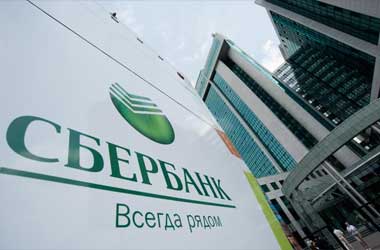
Sberbank, Russia’s oldest and largest bank, commands around 44% of total personal deposits in the country. The bank operates 14,200 branches and 77,000 ATMs throughout Russia.
The largest shareholder of the bank is the Russian government, with its Chairman and CEO, Herman Gref, being the ex-minister of Economics and Trade. Gref is well-known to be a great supporter of blockchain technology.
The government has stipulated $108,501,718.05 as the maximum bid for the tender, equating to $22,066.65 per ATM. According to the notice inviting bids, the provider must ensure that ATMs incorporate a graphic card in it.
“Graphic card with support for Nvidia Cuda for OS for image recognition and possible blockchain operability.”
Even though Bitcoin (BTC) ATMs is not strange, nevertheless, conventional bank ATMs backed by blockchain technology is never heard of. So, the obvious query that arises in one’s mind is the need for a graphic card in a bank ATM, with capability of conducting blockchain based functions.
One of the possible use cases is cryptocurrency mining. In such a case, will Sberbank issue its own crypto or the government of Russia will utilize the bank’s huge network for
May be there is an error in tender document and the graphics card is required only for image recognition as these ATMs also feature biometric authentication.
Matvey Voytov, head of marketing of Waves Enterprise blockchain platform, has studied multiple initiatives with Russian government and enterprises. Voytov stated that the blockchain technology could be used to document ATM transactions of users.
Even Voytov could not contemplate a use case for graphics card, apart from mining. However, he believes that the issuance of a CBDC or Sberbank’s own cryptocurrency is having less chance and feels that the tender document contains an error. Despite that, he underlined the loan issuance for small businesses using blockchain platform by Tax Authority.
Alexander Chepurnoy, co-founder of Ergo blockchain platform, also found it tough to identify real world use case for blockchain abled graphic card for purposes other than mining:
“Besides mining, perhaps it could be used for processing of some cryptographic algorithms, but I have no idea why an ATM would need it.”
He pointed out that the card is not capable of mining Bitcoin effectively, but could be used for mining of altcoins such as Ergo (EGYT), Ravencoin (RVN) or Grin (GRIN).
If Russia intends to issue CBDC, Sberbank would probably be the first institution to know about that as it can facilitate effective distribution of the digital ruble through its vast network of branches spread across the length and breadth of the country.
May be, the latest ATMs could turn out to become a portion of the huge mining network backing the new crypto token.
Of late, Russian MPs tabled a bill for penalizing illegal trading of cyrptocurrencies. It could be construed as a strategy to pave way for the launch of CBDC.
Similar to China, the need for a CBDC is urgent in Russia as the government is looking for a way to bypass conventional financial network, which is controlled by the US.
Notably, in the past, Sberbank has been slapped with sanctions by the West.